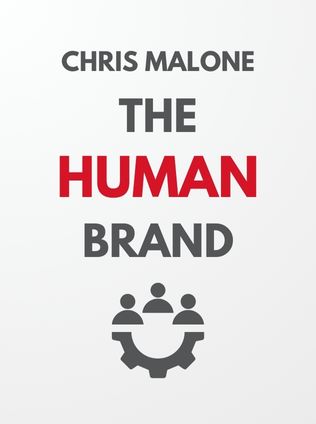
The Human Brand
How We Relate to People, Products, and Companies
By Chris Malone
Published 10/2013
About the Author
Chris Malone is the founder and managing partner of Fidelum Partners, a research-based consulting and professional services firm that helps clients achieve sustained business growth and performance. As a consultant and keynote speaker, he has worked with hundreds of senior executives in organizations ranging from Fortune 500 companies to startups and non-profits. His expertise lies in understanding and leveraging the dynamics of customer loyalty and brand relationships.
Susan T. Fiske is the Eugene Higgins Professor of Psychology and Public Affairs at Princeton University. She is the author of over 300 publications and has won numerous scientific awards, including election to the National Academy of Science. Her research focuses on how stereotyping, prejudice, and discrimination are influenced by social relationships, power dynamics, and cultural contexts.
Main Idea
"The Human Brand" delves into the psychology behind how we perceive, relate to, and judge companies, brands, and products. Malone and Fiske argue that our interactions with brands are driven by the same social judgments we apply to people, specifically the dimensions of warmth and competence. These judgments shape our loyalty, trust, and overall relationship with brands. The book explores how companies can build strong, loyal customer relationships by demonstrating genuine warmth and competence, and how these qualities are essential for success in the digital age.
Table of Contents
- Introduction: Back to the Future
- Warmth and Competence
- The Language of Loyalty
- The Loyalty Test
- The Principle of Worthy Intentions
- Loyalty as a Primal Attachment
- Shared Moral Values
- The Price of Progress
- The Digital Response
- Missed Opportunities
- Take Us to Your Leader
Introduction: Back to the Future
Through evolution, humans have become hard-wired to judge others almost instantly along two categories of social perception, which are known as warmth and competence. A person who demonstrates warmth and competence inspires feelings of trust and admiration within us, motivating us to seek a continuing relationship with that person. Conversely, one who displays competence in the absence of warmth tends to leave us feeling envious and suspicious, while someone we perceive as warm but not competent stimulates feelings of pity and sympathy. A person who exhibits low levels of both warmth and competence often provokes feelings of contempt and disgust.
We engage with brands and the companies behind them on the same basis of warmth and competence because, no different from people, companies and brands have the capacity to stir up these hard-wired primal passions. We experience feelings of affection and admiration for brands and companies that do well by us, and we feel insult or even rage when we believe that those companies have treated us badly. Large companies and brands that once seemed invincible are struggling and steadily losing market share. Americans have decided that bigger is no longer better, and in the case of some of America's best-known brands, bigger may be much worse.
At the same time, lots of smaller companies and brands are growing rapidly and filling the void with far fewer resources and a very different approach to doing business. They speak to us more intimately, and they appeal to our natural need for warmth and competence. A new Relationship Renaissance between customer and company is emerging out of the Middle Ages of Marketing, when mass communication and nameless, faceless "consumers" dominated. With a deeper, fuller understanding of how warmth and competence affect us all, you'll understand better how you are perceived, and you may even expect better of the people in your life, including those who stand behind the products and services you buy.
Warmth and Competence
Warmth is judged by assessing whether one is kind, friendly, and good-natured; whether one appears sincere, honest, moral, and trustworthy; and whether one possesses an accommodating orientation and is perceived as helpful, tolerant, fair, generous, and understanding. Competence is judged by assessing whether one possesses special resources, skills, creativity, or intelligence that grants them an advantage. Do people appear efficient, capable, skillful, clever, and knowledgeable? Do they seem to possess the confidence and ability to carry out their plans? These judgments are a remarkably simple but powerful mode of social perception that, by some measures, influences more than 80 percent of all human social behavior.
We use warmth and competence to assess not just people, but everything in our lives that acts or seems to act of its own free will. So we make warmth and competence judgments about people, groups of people, pets, animal species, teams, companies, brands, and nations. And when the car sometimes "acts up" or when the computer seems to have a mind of its own, we even make warmth and competence judgments about inanimate objects.
Brands Are People Too
Consider that every corporation is literally a body (corpus), and as customers, we perceive them as acting with intention and volition, just as we perceive other people. Human psychology has encoded in us the imperative to be wary of others but also the sense that they have warm intentions toward us and might offer us something of value. Out of our need to secure access to resources, we perceive, judge, and trade with brands and companies just as our most distant ancestors did with people and social groups. To be human is to balance these conflicting impulses—to be on guard and to cooperate. Perceptions of a company's intentions and abilities trigger specific customer emotions, which in turn drive customer behavior. Companies and brands win our affiliation and loyalty just as real people do, by worthy intentions and capability, through warmth and competence.
Moreover, research results show that, in the mind of the customer, a company's people are, in fact, the primary basis of judgment. Specific information about the intentions and behavior of the people behind companies and brands can significantly affect customer perceptions and loyalty to the products and services those people produce—even while the product itself remains unchanged.
The Language of Loyalty
If companies are going to succeed with customers in the Relationship Renaissance, a new language of loyalty is needed, one built around warmth and competence. Our loyalty as customers doesn't commit us to abstract companies or brands. Rather, we become loyal to what we experience, learn, or infer about the intentions of people behind those companies and brands. And we don't even need to know those people firsthand. Our mental apparatus perceives brands as stand-ins for people, logos as substitutes for faces, and companies as the equivalent of a tribe or social group. The best companies and brands, the ones we bond with, are those that we are most easily able to relate to and evaluate on the basis of their human characteristics.
Sign up for FREE and get access to 1,400+ books summaries.
You May Also Like
The Subtle Art of Not Giving a F*ck
A Counterintuitive Approach to Living a Good Life
By Mark MansonHow To Win Friends and Influence People
The All-Time Classic Manual Of People Skills
By Dale CarnegieFreakonomics
A Rogue Economist Explores the Hidden Side of Everything
By Steven D. Levitt and Stephen J. DubnerQuiet: The Power of Introverts
The Power of Introverts in a World That Can't Stop Talking
By Susan CainIf You Tell
A True Story of Murder, Family Secrets, and the Unbreakable Bond of Sisterhood
By Gregg Olsen



















